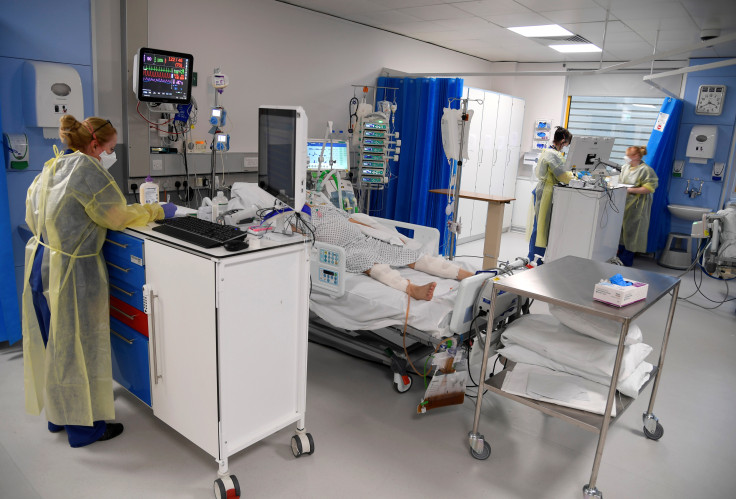Five leading hospitals in Britain to be rebuilt through the New Hospital Programme worth £20 billion
The hospitals with infrastructures containing deteriorated concrete are set to be refurbished and upgraded by the end of the decade.

The government announced plans yesterday to rebuild five key hospitals across Britain that were originally built using reinforced autoclaved aerated concrete (RAAC) and the hope is that the hospitals will be rebuilt by 2030. The government has put aside over £20 billion in funding to aid with new hospital infrastructure and it is the first time the New Hospital Programme will have received a backing of this extent.
The New Hospital Programme was formed with the intention of building 40 new hospitals by 2030 and with the aim of adding eight additional schemes further down the line. Also, the programme aimed to evolve the infrastructure within NHS healthcare and standardise hospital design.
The five hospitals now set to be prioritised are Frimley Park in Surrey, Mid Cheshire Leighton in Cheshire, Airedale in West Yorkshire, Queen Elizabeth King's Lynn in Norfolk and Hinchingbrooke in Cambridgeshire. The new infrastructure will allow for a safer and improved environment for staff and patients as the RAAC attached to these hospitals is known to seriously deteriorate over time.
The Senior Responsible Owner of the New Hospital Programme, Natalie Forrest, outlined the specific improvements which would be made to the hospitals. She pronounced: "We're continuing to build healthcare infrastructure that improves patient care – including modern designs, creating single rooms ensuring maximum natural light and access to outdoor spaces. This new design will reduce the workload of NHS staff through digital solutions, well-designed flow and designated areas for staff recuperation."
The unsafe environment caused by the hospitals' ageing infrastructure has led to the NHS requesting that the government prioritise the five buildings listed as the staff and patients at those hospitals are most at risk. The New Hospital Programme's inauguration in 2020 has increased the level of attention on the outdated nature of some of Britain's hospitals and the true extent of the issues it causes to those at the buildings.
Health and Social Care Secretary, Steve Barclay, spoke on the reasoning for now focusing on the five hospitals and what this new funding from the government can bring. He stated: "These 5 hospitals are in pressing need of repair and are being prioritised so patients and staff can benefit from major new hospital buildings, equipped with the latest technology. As we approach the 75th anniversary of our fantastic NHS, this extra investment will ensure it can care for patients for decades to come".
In addition to the five hospitals that have prioritisation, the New Hospital Programme plan to work on two other hospitals, James Paget Hospital in Norfolk and West Suffolk in Bury St Edmunds, suffering from surrounding deteriorated concrete.
Due to the focus shifting primarily to the hospitals surrounded by deteriorated concrete and a rise in the cost of construction materials, the initial plans set out by the New Hospital Programme will be halted. This is because the eight schemes which were ideally meant to be placed before 2030 will now happen after the start of the next decade.
The government has committed to removing all RAAC from NHS Estate by 2035 and so far, has provided £685 million to instantly aid affected trusts in order for staff and patients at the hospitals to remain protected and safe from any threats.
An ongoing programme of capital investment within hospital infrastructure to attain newly built hospitals from 2030 onwards will be used in the future to consider any new schemes looking to get the go-ahead. This switch in strategy will lead to larger funds in NHS facilities across Britain and more than 40 hospitals will be able to be constructed in the far future.
Authorising new hospitals with this nationwide approach will lead to the construction of them happening in a much quicker time and for less money which in turn offers value to taxpayers. Crucially, staff and patients will be able to have much more seamless experiences at the newly designed hospitals as the newest technology and digital innovation will be on display and of efficient use to them.
Health Minister, Lord Markham, touched on the need to deal with RAAC surrounding hospitals. He clarified: "In the immediate term, we're focussing on quickly and safely rebuilding hospitals in areas which need it most – specifically those affected by this specific type of concrete, which poses a significant risk to patients and staff if not rebuilt by 2030".
In terms of the new approach and future plans further along the line, Markham said: "In the long term, our new standardised design means we can rapidly replicate new hospitals across the country, helping speed up construction and improving services for patients faster."
Furthermore, in an effort to better mental health inpatients and remove mental health dormitories, three new mental health hospitals with a £179.7 million budget will be built. Mental health amongst people in Britain has worsened since the COVID-19 pandemic began with young people especially having suffered due to isolation.
Also, £5.9 billion in funds will go towards elective recovery, diagnostics plus technology. A further £1.7 billion will be available to more than 70 hospitals in need of a major transformation.
Labour leader, Sir Keir Starmer, remains committed to improving Britain's health sector and revolutionising the NHS. He has even suggested the use of artificial intelligence within the NHS and touched on how it can be used for greater productivity and lessen the workload of staff.
© Copyright IBTimes 2025. All rights reserved.






















